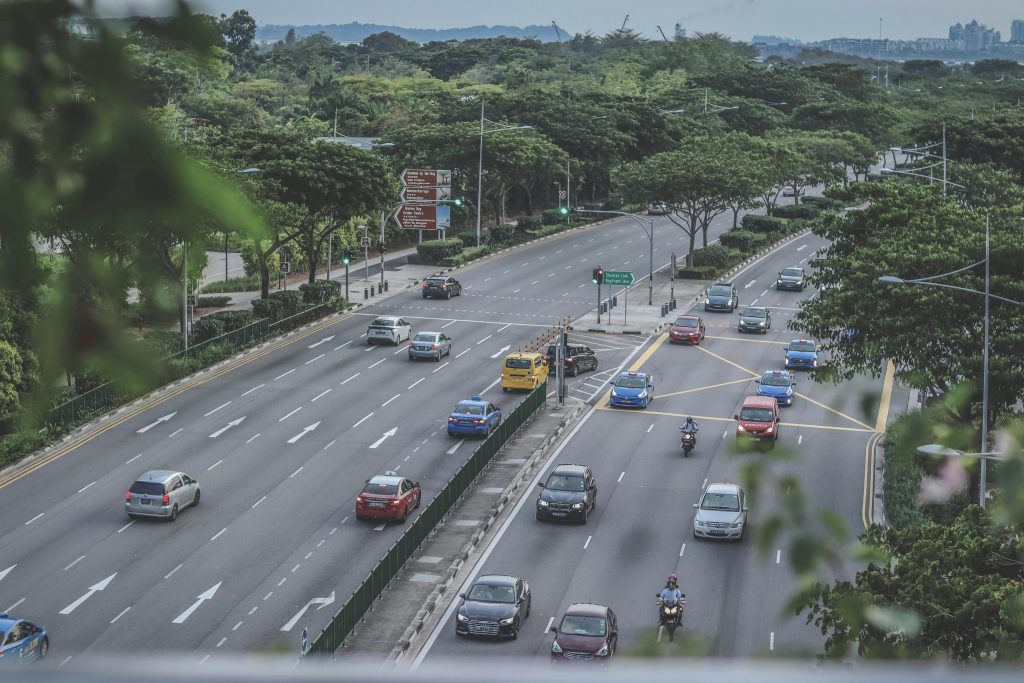
- Public transportation in Singapore is cost-effective and punctual, while private transport offers route flexibility and speed.
- Owning a car incurs high expenses, whereas government subsidies make public transport affordable.
- The extensive, reliable public transport network provides convenience, though private transport caters to specific needs.
- Public transportation enhances Singapore’s green initiatives; private cars have a greater environmental impact.
Singapore is a bustling city-state with a population of over 5.4 million people and one of the most efficient transportation systems in the world. The city boasts an extensive public transportation network that includes buses, trains, and taxis and private transportation options such as cars and motorcycles. But which mode of transport is best for you? This blog will compare the pros and cons of public versus private transportation in Singapore to help you make an informed decision.
Time-Saving
Public transport may be cheaper than private transport, but it may take longer to get from point A to point B due to its fixed routes and schedules, especially during peak hours when congestion is high. Transferring between different modes of public transport can also add time to your journey, whereas private transport allows you flexibility in terms of which route you take or where you stop along the way. However, it’s important to note that it’s not all about speed.
In Singapore, the public transport system is extremely efficient and punctual. You can still save time by avoiding traffic jams or finding parking spaces. Their SMRT Trains, in particular, have a high punctuality rate, making them a reliable option for commuters. These trains also have advanced signaling technology that minimizes delays and increases efficiency. The public transport network covers a wider area than private transportation options, making it easier to reach more destinations.
Cost

One of the main advantages of public transportation is its affordability. Singapore’s public transport system is subsidized by the government, making it very affordable for commuters to travel across the island. On the other hand, owning a car in Singapore can be very expensive due to high taxes and fees imposed on vehicle ownership. Additionally, other costs are associated with car ownership, such as maintenance expenses, road tax, parking fees, and more.
Convenience
Public transportation in Singapore is highly convenient and accessible to almost everyone, with numerous bus stops and train stations throughout the island. Buses run frequently during peak hours while trains operate on a strict schedule, making commuting to work or school easy and predictable. However, if you prefer more privacy or have specific destinations not easily accessible by public transport, then private transportation may be more suitable for you.
Environmental Impact
Singapore has made significant strides towards becoming a greener city-state through various initiatives aimed at reducing carbon emissions. Public transportation plays a significant role in this effort as it reduces the number of cars on the road, thereby reducing air pollution and traffic congestion. Private transportation, especially cars, contributes to environmental degradation through emissions from fuel combustion.
Safety
Safety is always a concern when it comes to transportation. Singapore’s public transport system is known to be one of the safest in the world, with strict regulations governing safety standards and driver training programs for bus and train operators. Here are four ways it puts passengers’ safety first:
Regular maintenance of vehicles and infrastructure.
The regular maintenance and upkeep of public transportation vehicles and infrastructure ensure that they are always in good condition, reducing the risk of accidents caused by technical malfunctions. This also includes regular inspections to identify and address any potential safety hazards.
Advanced technology for enhanced security.
Singapore’s public transportation system uses advanced technologies such as surveillance cameras, alarm systems, and emergency buttons to enhance passenger safety and deter criminal activities. These measures also help authorities quickly respond to any incidents on board.
Strict regulations for driver conduct.

Bus and train operators in Singapore undergo thorough training and are required to adhere to strict regulations governing their conduct. This ensures that drivers operate vehicles safely and responsibly, thereby reducing the risk of accidents caused by human error.
Dedicated emergency response teams.
In case of emergencies such as accidents or medical emergencies, Singapore’s public transport system has a dedicated emergency response team that can quickly respond and provide assistance to passengers in need.
These factors make public transportation a safe and reliable option for commuters in Singapore. However, private transportation may offer more personalized safety measures, such as having control over who is driving the vehicle. Ultimately, the choice between public and private transportation in Singapore depends on personal preferences and needs.
When choosing between public and private transportation in Singapore, there are various factors to consider. Public transport offers affordability, extensive coverage, reliability, and environmental benefits, while private transportation provides flexibility, comfort, and freedom. Ultimately, your decision depends on your lifestyle, priorities, and the value you place on convenience, cost, time, environmental impact, and safety. Singapore’s well-managed transport infrastructure ensures efficient and safe travel, whether you’re a resident or a tourist.